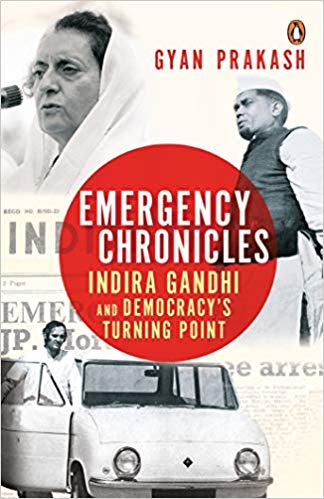Emergency Chronicles fills a void among the available scholarly works covering the period of what was an ‘aberration’ in Indian politics. In this riveting work of impressive archival research, Gyan Prakash lifts the curtain from the evolutionary sequencing of events leading to June 1975—the day Emergency came into force—and uncovers the everyday governing apparatus of a then proto fascist—if not a full blown fascist-government reigning for two dark years ending in 1977. This perceptive work is like a missing piece of a puzzle from the history of modern India’s politics, enabling one to make sense of the most senseless times in India’s political lexicon. The author has woven the arrest of Prabir Purkaystha from the old JNU campus down to every known horror story of the Emergency that saw itself through the print. Readers should especially lookout for the account of the letters exchanged between Pramila and Madhu Dandvate—an undoubtedly rich and personal account of the traumatic period.
At the very outset the book lays out what it set out to achieve—running into nine chapters—to question and unpack the very misconception of Emergency being considered a sudden outburst of a cornered Prime Minister. Gyan Prakash argues that the logic of Emergency is not very difficult to comprehend if one locates it in the very unfolding of the procedural democracy in postcolonial India, whereby he underlines the contradictions of India being a ‘pedagogic state’ which is far removed from the social realities of the country and aims to coach its people on how to be ‘productive citizens’. This line of argument, that India being a liberal progressive state imposed on a highly illiberal society, which in turn is highly divided by the rigid identities of caste, religion and region, has been explored elsewhere as well. However, the perspective formulated in the Emergency Chronicles, that the very idea, envisioning India as a highly centered and powerful state donning a pedagogical superiority over its own people contained the seeds of the discontent, which eventually led to the Emergency, is insightful.
Drawing the readers’ attention to the idea of a nation-state, the work reminds us that India has never been a ‘nation’ in the western origin of the term. The country was constitutionally nationalized and administratively unified to build an idea of a nation where the voices of the marginalized and oppressed will not be silenced and rather will enable them to express themselves freely. Gyan Prakash emphasizes that the idea underlying the making of a nation out of India, rooted in Saadat Hasan Manto’s critique of a nation emerging out of the communal divide and Ambedkar’s conception of a state against caste inequalities, poses a serious challenge to the unity of the nation-state. The only way then, to firm up a unified country battered by religion and caste, was to ensure that the violent forces challenging the constitutional order would be controlled and sensitized about the Constitution through a strong state alone. And thereby begins the conflict between the Leviathan and the ‘unruly masses’.

